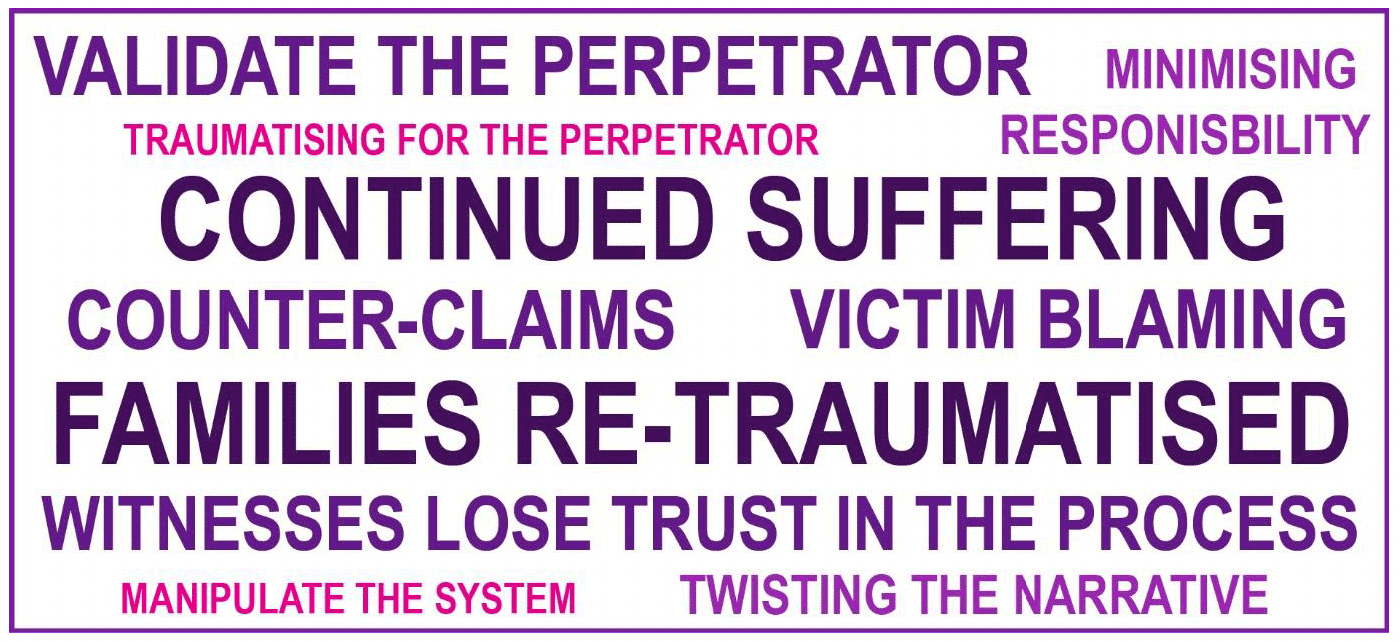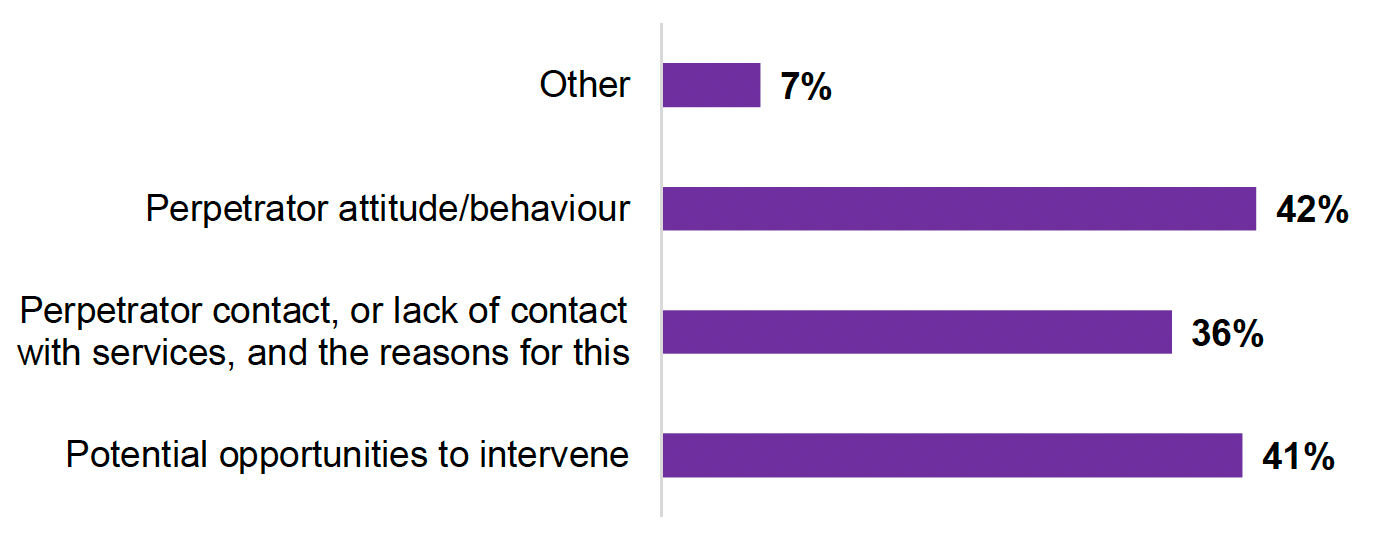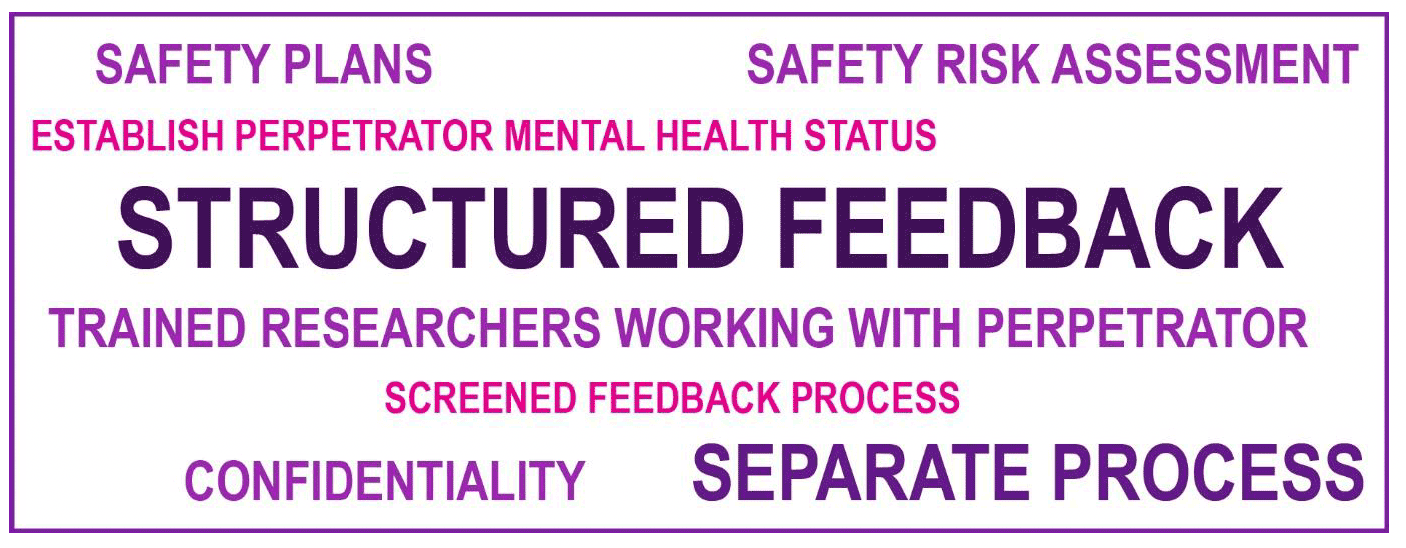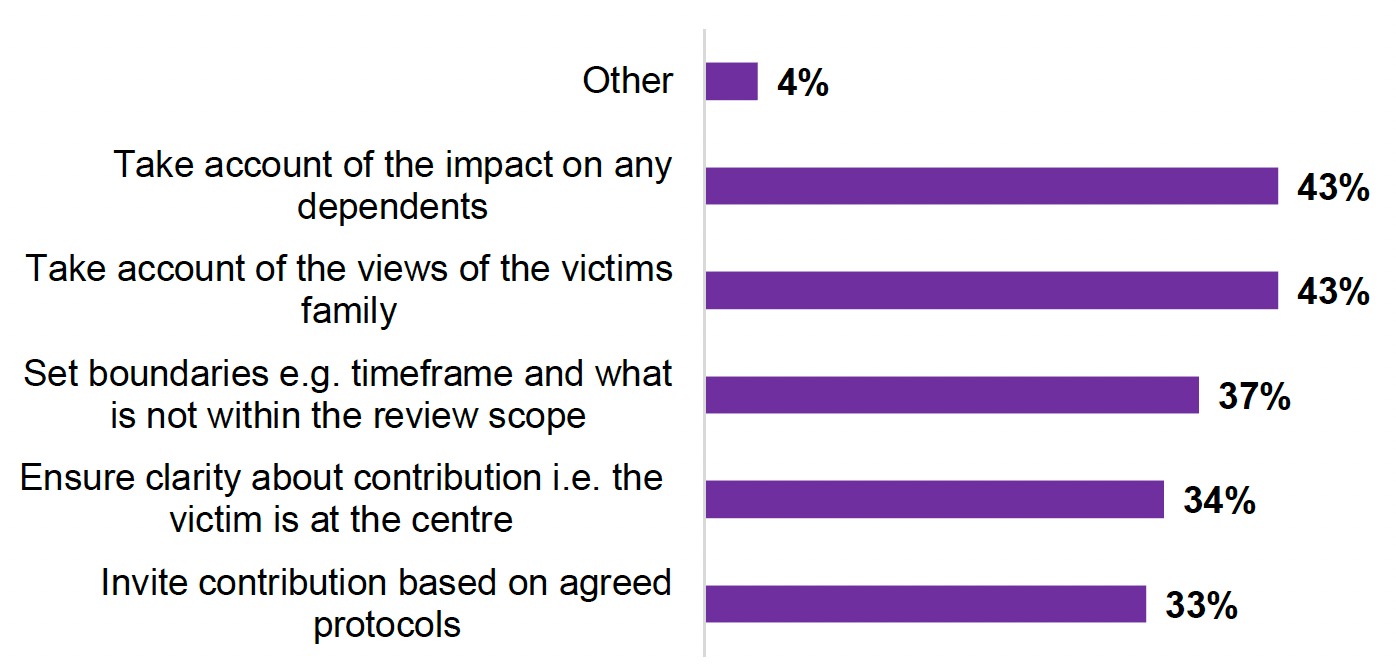Domestic homicide reviews: consultation analysis
We undertook a period of consultation and targeted engagement to inform the development of a Domestic Homicide Review model for Scotland. Those with lived experience of domestic abuse and those working in the field shared their views on fundamental aspects of the model.
C) Perpetrators' Involvement
This section is about understanding perpetrators’ involvement with services prior to the death of a victim.
Similar to families and friends, the person accused or convicted of the death would have a choice as to whether they participate in the review. Any involvement or information from or about perpetrators would need to be sensitively managed to ensure the review focus remains on the victim and on learning lessons. There would also need to be a protocol in place with Police Scotland and COPFS to ensure that any engagement would not jeopardise criminal investigations or legal proceedings.
21. Risks: What are the risks of seeking input from perpetrators during the Domestic Homicide Review process? For example, traumatising for family, friends of victim and/ or perpetrator.
Respondents were asked what the risk of seeking input from perpetrators may be during the Domestic Homicide Review process. A risk that was shared among all respondents was that involvement of perpetrators could enable the perpetration of further abuse. All respondents with lived experience felt strongly about not giving a voice to perpetrators as the DHR is about a crime/murder and the focus should be on that, not gaining two sides to the story with ‘he said/ she said’.
The various ways in which such harm could manifest are detailed in Figure (34).

Professionals and professionals with lived experience acknowledged that seeking input from perpetrators could help in learning and is therefore crucial. It was also noted that there is value in perpetrators’ involvement if the conviction is in place and accepted, as this would allow learning as to whether it may have been possible to prevent the death. This could sometimes help families and friends understand the wider circumstances of events leading up to the death. Other professionals felt the evidence from legal proceedings should be used instead to gain any information required about the perpetrator.
Clarity was highlighted as essential if input was being sought from perpetrators. Having set parameters and ensuring safeguarding mechanisms are in place regarding the information that is shared with perpetrators about others’ input and the input they may provide. Respondents emphasised the need to mitigate all possible ways in which the involvement of perpetrators could facilitate further abuse and act as another platform for perpetrators to coercively control and harm surviving family members, including children, friends and carers.
22. Benefits: What are the benefits to seeking input from perpetrators during the Domestic Homicide Review process?
Less than half of responders selected any of the benefits shown in Figure (29) below. The highest selected benefit to seeking input from perpetrators by respondents (42%) is to ‘better understand perpetrator attitudes and behaviours’. Closely behind (41%) was that seeking input would help ‘identify potential opportunities to intervene’. The lowest potential benefit selected by respondents (36%) was that input could shed light on ‘contact or lack of contact with services’.

There were mixed views amongst all respondents, especially those with lived experience and professionals with lived experience, about any benefits from involving perpetrators. Many of those who answered could not see a purpose to involving perpetrators, and expressed concern that involvement could serve as a new platform for perpetrators to exert control by lying and making excuses, subsequently distorting the narrative. Respondents highlighted that involvement would need to be mediated, and a system where the perpetrator is under close supervision was suggested by some.
Another benefit of involving perpetrators that was shared by respondents was the opportunity to learn lessons from perpetrator behaviour and the perceived failure of services.
A majority of professional respondents’ view is that it would help in understanding and tackling the root cause of abuse and address perpetrator vulnerabilities, such as mental illness, history of abuse and drug or alcohol dependency. Ultimately, this would inform prevention guidelines, as patterns in agency or sector communication shortfalls may emerge. Building this information across multiple Domestic Homicide Reviews could facilitate early detection by identifying predictors to domestic homicide and contextualised timelines.
23. Precautions: What precautions should be put in place if the Domestic Homicide Review process seeks input from the perpetrator?
Respondents were asked about the precautions that should be in place if a Domestic Homicide Review process were to seek input from the perpetrator. A large majority of comments from those with lived experience and professionals with lived experience were against the involvement of perpetrators in any way as the best precaution. Shared comments stated that seeing the perpetrator’s name in the report would be triggering to surviving family members and friends.
Professionals and some professionals with lived experience reflected on the necessary precautions to consider if involving perpetrators. These are summarised in Figure (36) below.

24. Engagement: How could the review panel engage with the perpetrators to learn lessons about their involvement with services prior to the death?
“Take a bespoke approach based on comprehensive guidance and informed by professionals with the relevant experience, knowledge and skills.” Professional respondent
Respondents were asked about the various ways in which the review panel could engage with perpetrators. At least one third of respondents chose a way for the review panel to engage with perpetrators. Two categories reached equal consensus of 43%. These were ‘taking account of the view of the victims’ family’ and ‘impact on any dependents’.

Some responses reiterated that perpetrators should not be invited to engage with the Domestic Homicide Review. This is consistent with the total response rates to this question, with 43% selecting an appropriate way to engage with perpetrators. Others stated that high level training to any staff working on Domestic Homicide Reviews was necessary, to understand the complex and intersectional nature of domestic abuse. Comments were made that only by adopting an intersectional approach, researchers, policymakers, and practitioners can gain a more comprehensive understanding of the complex and multifaceted nature of domestic homicide.
Other respondents mentioned the importance of safety for all involved and adopting a bespoke trauma-informed approach based on comprehensive guidance. Ensuring the perpetrators’ vulnerabilities and additional needs are recognised.
Contact
Email: dhrmodel@gov.scot
There is a problem
Thanks for your feedback